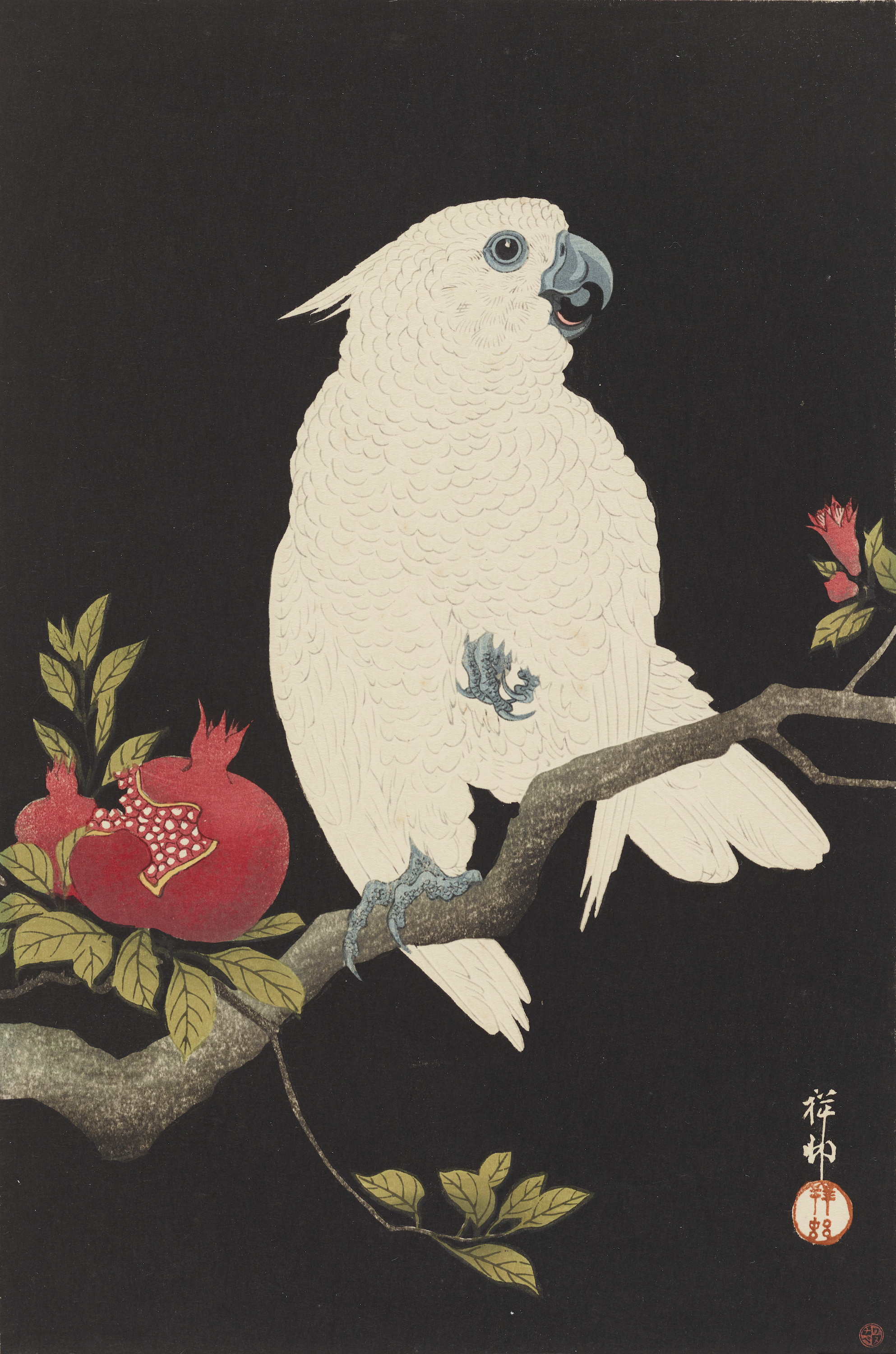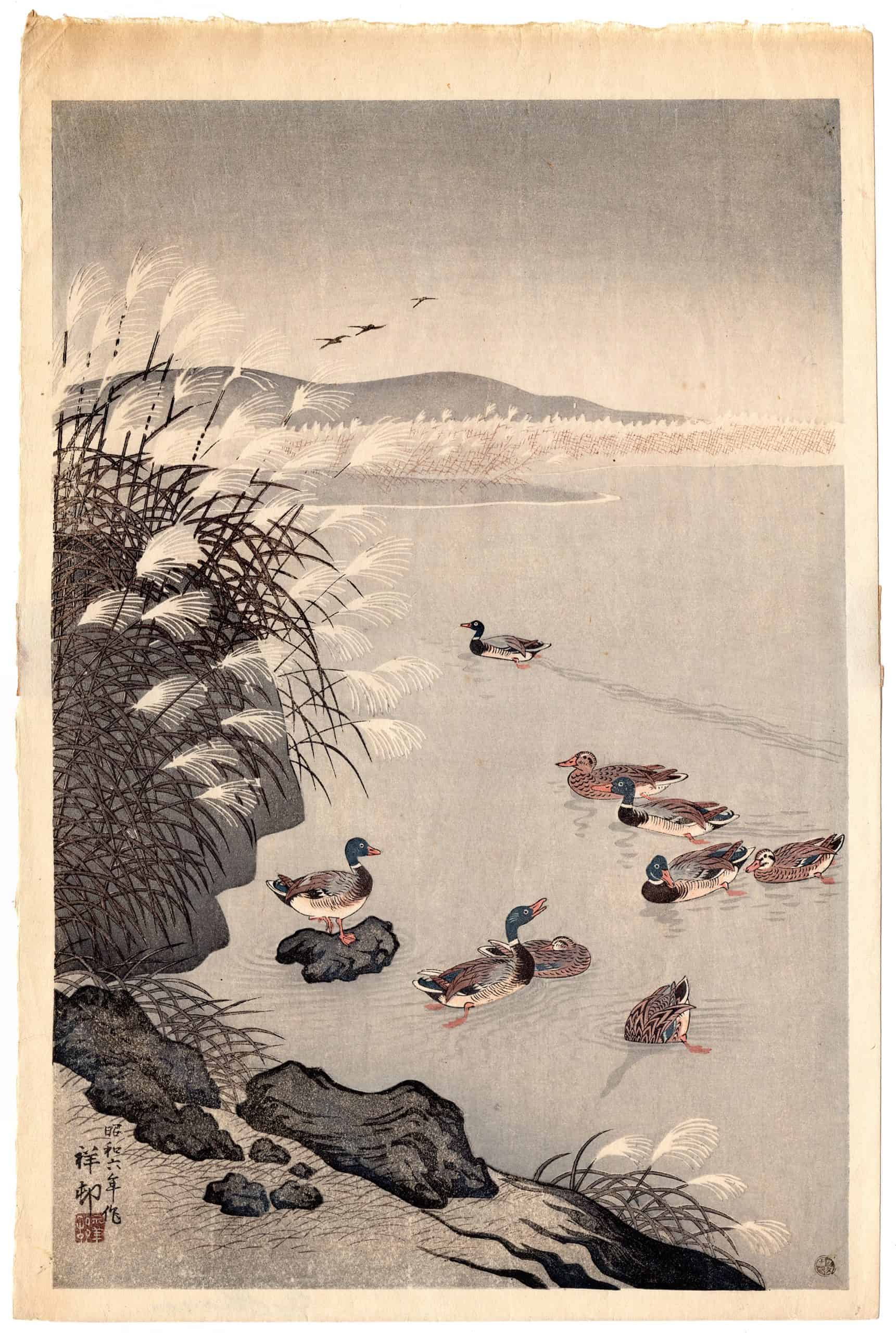Japanese Kachō-e ("bird-and-flower pictures") offered a charming respite from the melodrama of kabuki-e for print enthusiasts. Early kachō-e were influenced by Chinese traditions and sought to capture the essence of nature in relation to the seasons, poetic references, or religious values. Bird images often held symbolic meanings—such as the crane, associated with longevity. By the 20th century, the focus had shifted towards the simple pleasure of intimate nature views, moving away from these symbolic associations.
Ohara Shōson, the most celebrated shin-hanga ("new print") kachō-e artist, designed over 450 bird compositions. Trained in Nihonga (Japanese-style painting) under the name Koson, he specialized in the naturalistic styles of the Maruyama-Shijō school. He initially worked on senso-e triptychs depicting the Russo-Japanese War but later concentrated on creating intimate shin-hanga depictions of birds in their natural habitats.
Shōson's naturalistic style, characterized by delicate watercolor washes, set him apart from other contemporary kachō-e designers and garnered popularity both in Japan and the West. Shōson’s works are mostly known for their quiet understatement, though some are more dramatic. Others feature gentle humor and decorative charm, such as Cockatoo and Pomegranate, part of a series of cockatoo compositions. This piece introduced bold figure-ground contrasts and resembles a painting on silk.
Psst ... This cockatoo is featured in our Weekly Desk Calendar for 2025—that's right, with this masterpiece we're announcing the presale of our stunning art calendars! :) You can order them in the DailyArt shop with a 25% discount!
P.S. Japanese art is famous especially for the great variety of woodblock prints. Here are 10 amazing Japanese woodcuts you need to see!


 Ohara Koson
Ohara Koson